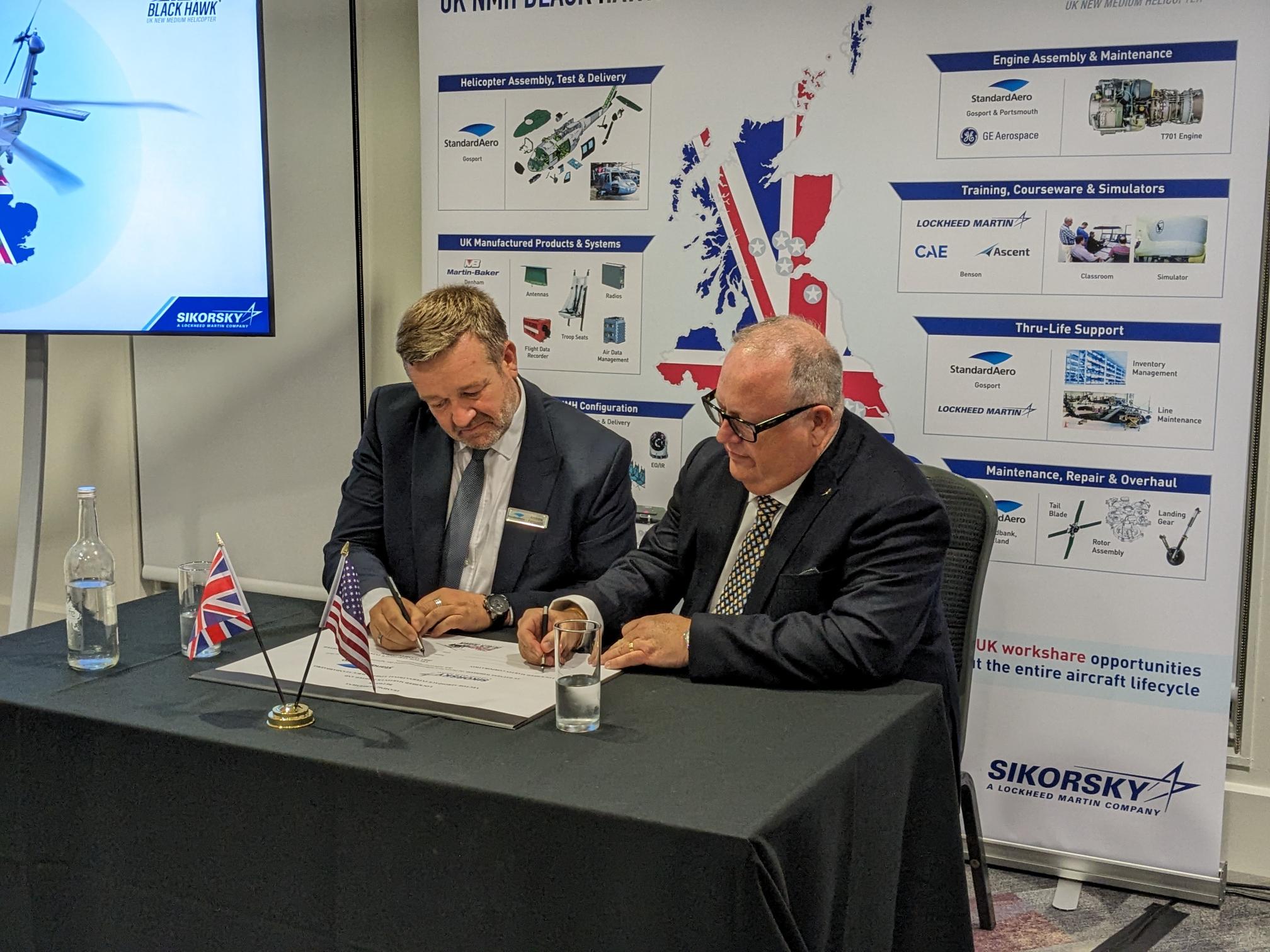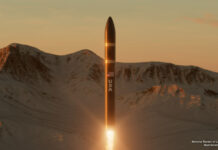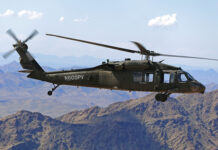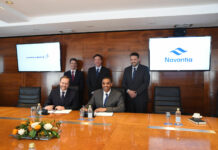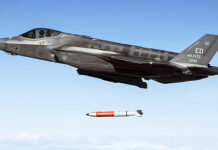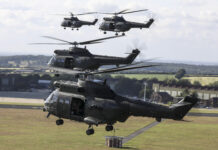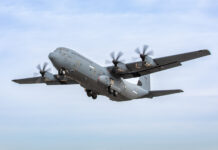Lockheed Martin UK took the opportunity at DSEI 2023 on 12 September to further its pitch for the UK’s New Medium Helicopter (NMH) requirement, for which it is bidding the Sikorsky S-70M Black Hawk.
In doing so the company introduced its Team Black Hawk of industry partners for the requirement and, in front of gathered journalists, formally signed a teaming agreement with Gosport-based StandardAero as Team Black Hawk’s aircraft assembly, testing, delivery, maintenance and integration partner for UK-unique equipment and systems.
The other Team Black Hawk partners include Martin-Baker Aircraft Company in Denham, Curtiss-Wright in Christchurch, Chelton in Marlow, Inzspire in Lincoln, C3iA Solutions in Poole, Nova Systems in Filton, and Ascent Flight Training & CAE at RAF Benson.
The NMH programme was originally given a relatively ambitious in-service date of 2025, but this now seems impossible. The UK Ministry of Defence (MoD) released an NMH ‘Contract Notice and Dynamic Pre-Qualification Questionnaire’ on 18 May 2022, with a deadline of 20 June 2022 for responses, and in October 2022 informed Airbus Helicopters, Boeing, Leonardo and Lockheed Martin (Sikorsky) they had successfully been downselected, although Boeing subsequently withdrew as a prime bidder and folded in with Airbus.
Consequently, the Black Hawk is now squaring off against the Airbus Helicopters H175M and Leonardo AW149 in bidding for the NMH requirement.
Outlining the case for the S-70M Black Hawk to fulfil the UK’s NMH requirement, Lockheed Martin UK Chief Executive Paul Livingston pointed to the fact that the Black Hawk is already in service with 35 countries, has flown 15 million flight hours (five million of which have been in combat conditions), has a user base of more than 5,000 units worldwide and currently delivers an operational readiness rate exceeding 90%. Additionally, Livingstone noted that the Black Hawk, unlike its competitors, was designed from the outset as a military helicopter. As an example of the advantages that this confers, he noted the aircraft’s high level of ruggedness and crashworthiness, arguing that this would mean lower lifecycle costs compared to an originally civil helicopter design put to military use. He also pointed to the fact that the Martin-Baker seats of the Black Hawk’s pilot and co-pilot can be folded back flat, allowing either of them to be easily extracted from their station if wounded during combat operations.
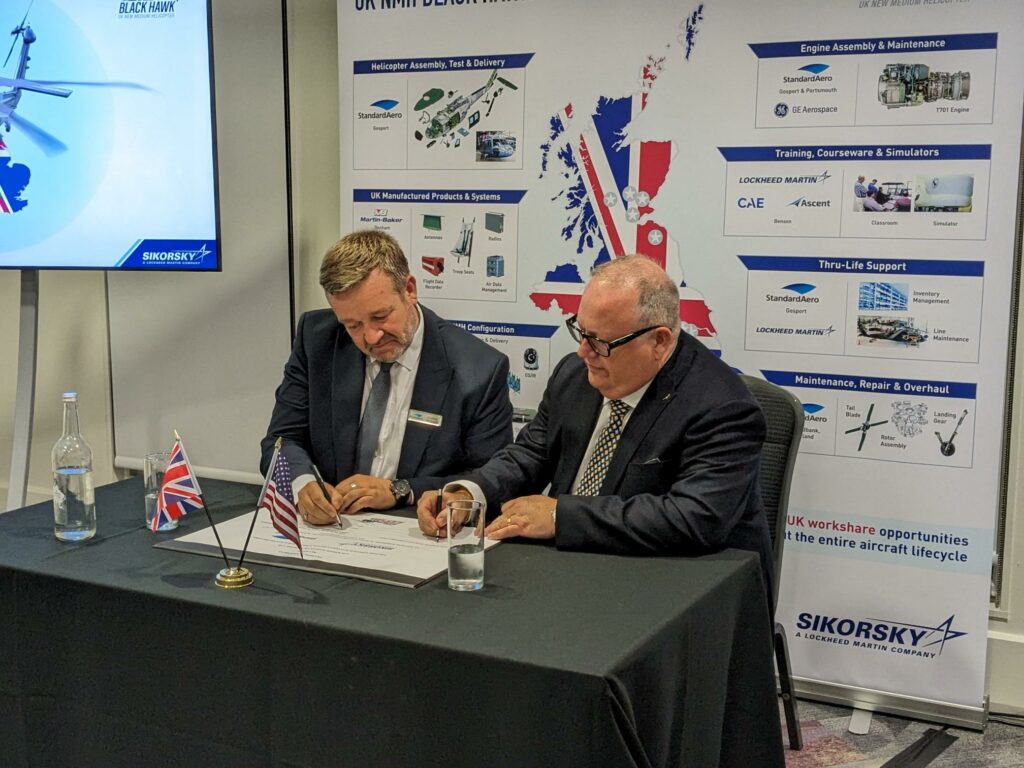
One perceived weakness in the Black Hawk bid in comparison with its competitors has been the impression that there would be a lower degree of UK content in the aircraft. Airbus and Leonardo have both stated they would set up NMH production lines in the UK, whereas Sikorsky is expected to ship Black Hawk airframes from its PZL Mielec production facility in Poland.
Addressing this issue, Livingston pointed out that the NMH invitation to negotiate (ITN) “hasn’t been released yet, so we haven’t seen the social strand” (the precise requirements for UK content). He asserted, however, that around 40% of the overall value of the NMH programme would be supplied form within the UK should the Black Hawk prevail.
Livingston additionally pointed out that having a Black Hawk production line already hot in Poland would allow Lockheed Martin to “pivot more quickly to set up in the UK”.
The NMH programme is intended to replace the fleet of 23 Royal Air Force (RAF) Puma HC2s operated by No 33 and No 230 squadrons out of RAF Benson in Oxfordshire, as well as five Bell 212s serving with the Army Air Corps’ (AAC’s) No 667 Squadron in Brunei, three Griffon HAR2s operated by the RAF’s No 84 Squadron out of RAF Akrotiri on Cyprus (tasked with search and rescue), and six special-forces-roled AS365 N3 Dauphin IIs operated by the AAC’s No 658 Squadron from the Special Air Service barracks at Credenhill in Herefordshire.
Peter Felstead


